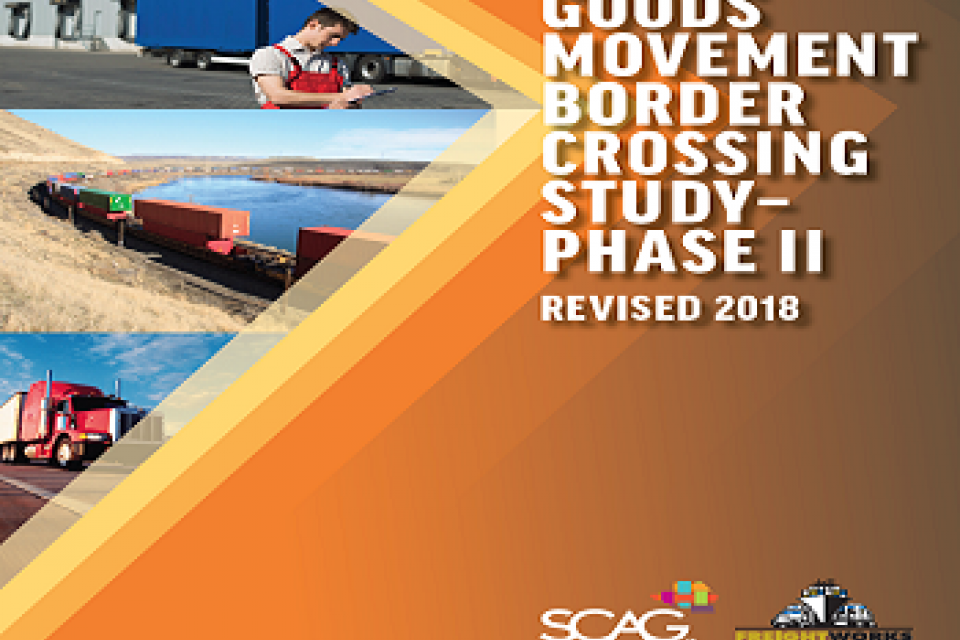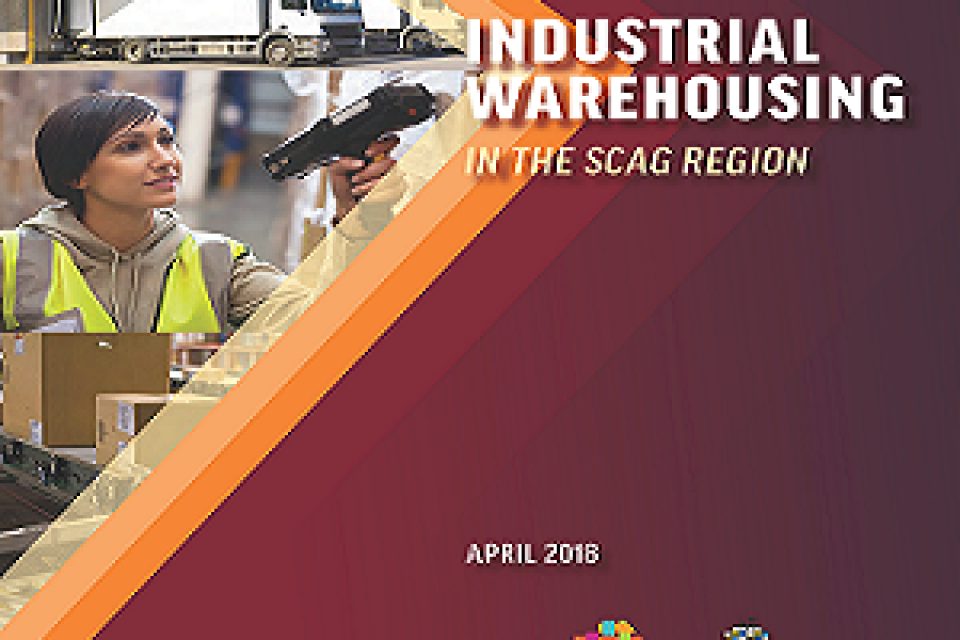Studies and Programs

As the Metropolitan Planning Organization (MPO) for Imperial, Los Angeles, Orange, Riverside, San Bernardino, and Ventura Counties, SCAG performs ongoing research and analyses of the regional transportation system. Goods movement, in particular, receives a significant amount of attention as it serves as one the most critical economic generators in Southern California.
Studies
SCAG has recently completed, or is currently involved in, a number of studies related to goods movement in Southern California at any given time. Below are a number of recently completed efforts designed to provide meaningful input into the development of the Regional Transportation Plan/Sustainable Communities Strategy as the agency develops the long-term blueprint for transportation in the region
- Industrial Warehousing Study (Revised 2018)
The Southern California Association of Governments (SCAG) region is home to approximately 34,000 warehouses with 1.17 billion square feet of warehouse building space, and undeveloped land that could accommodate an additional 338 million square feet of new warehouse building space. The Industrial Warehousing Study is an update from previous work, which evaluates how the region could accommodate future demand for warehouse space based on key supply chain trends. Study findings were used to formulate discussion points, which will engage policy-makers, logistics industry stakeholders, and public-sector agencies about how best to shape the region’s strategic vision and grow, while balancing economic and environmental objectives.
- SCAG Goods Movement Border Crossing Study – Phase II
The Goods Movement Border Crossing Study – Phase II assessed goods movement border crossings in San Diego and Imperial Counties to identify emerging trends expected to affect future freight movement, provide forecasts of cross-border freight volumes under alternative scenarios, and develop recommendations to enhance future goods movement.
SCAG Goods Movement Border Crossing Study - Phase II | View Story Map
- Connect SoCal – The 2020-2045 Regional Transportation Plan/Sustainable Communities Strategy
Goods movement and freight transportation are essential to support the SCAG regional economy and quality of life. Working with its public and private partners, SCAG has established a vision for a comprehensive regional goods movement system. This network is intended to be a world-class, coordinated system that accommodates growth in the throughput of freight to the region and nation in ways that support the region’s economic vitality, attainment of clean air standards, and the quality of life for our communities.
- Comprehensive Regional Goods Movement Plan and Implementation Strategy
On The Move represents a long-range comprehensive plan for the goods movement system in Southern California. The Plan is designed to ensure that the region continues to play a vital role in the global supply chain while meeting regional economic goals, addressing critical mobility challenges, preserving the environment, and contributing to community livability and quality of life goals. The Plan is the final product of the Southern California Association of Governments’ (SCAG) Comprehensive Regional Goods Movement Plan and Implementation Strategy, a multi-year effort to collect data, conduct analyses, and engage with regional, statewide and national stakeholders covering various aspects of the region’s goods movement system.
- Chapter 1: A Vision for a World-Class System
- Chapter 2: What Drives Regional Goods Movement
- Chapter 3: The Goods Movement System
- Chapter 4: Existing and Future Conditions and Needs
- Chapter 5: Environmental/Community Issues and Needs
- Chapter 6: The Regional Goods Movement Plan
- Chapter 7: Economic Benefits of Goods Movement
- Chapter 8: Paying for the Plan
- Chapter 9: Paving the Path Forward
Complementary Studies
- Regional Warehousing Needs Assessment
- Evaluation of Environmental Mitigation Strategies
- Port Activity Competitiveness Tracker (PACT) Report
- Analysis of Freight Rail Electrification in the SCAG Region
- Regional Rail Simulation Study Summary Report
- Regional Rail Simulation Study Technical Appendix
Steering Committee
September 28, 2011
- Meeting Agenda
- Rail Emissions Reduction Strategies
- Truck Emissions Reduction Strategies
- Railroad Project Packaging Status Update
September 8, 2011
- Meeting Agenda
- Bottleneck Strategy
- East-West Freight Corridor Zero-Emission Technology Strategy Status Update
- East-West Freight Corridor Concept
- Update on Rail Electrification Study
August 4, 2011
June 21, 2011
March 21, 2011
February 24, 2011
- Meeting Agenda
- Review of Key Items from the December Meeting and Overview of Agenda
- Regional Rail Strategies: Rail Market Review
- Regional Rail Strategies: SCAG Region Rail Strategies
- Regional Rail Strategies: Updated Regional Rail Simulation Results
- Railroad Emissions - Background and Mitigation Options
- Air Quality Impacts and Implications
December 9, 2010
- Meeting Agenda
- Meeting Notes
- RTP Development Process and Integration of Goods Movement Plan
- On-Road Emissions Reductions
- New Technology Alternatives for Line-haul Freight
September 21, 2010
- Meeting Agenda
- Meeting Notes
- Warehouse Space Forecasts
- Proximity of Warehousing to Alternative East-West Freight Corridors
- Truck Congestion Hot Spot Analysis
- Task 5 Final Findings: Needs Assessment of Industrial/Warehouse Facilities
April 21, 2010
- Meeting Agenda
- Meeting Notes
- An Overview of Import Supply Chains
- Port and Modal Elasticity Study Phase II Findings
- Process for Updating Goods Movement Element of the Regional Transportation Plan: Railroad Component
January 21, 2010
- Meeting Agenda
- Meeting Notes
- Understanding California's Growth Pattern
- Regional Truck Lanes System
- Warehouse Analysis
October 13, 2009
- Complementary Studies
- Goods Movement Border Crossing Study and Analysis (2012)
With today’s global economy and time-based competition, efficient freight transportation networks serve as extremely critical links between manufacturers, distributors, and consumers. Planning for adequate transportation infrastructure and freight facilities that enhance goods movement in is particularly challenging for border regions. Given this, SCAG conducted the Border Crossing Study and Analysis to gather and synthesize information on goods movement across the U.S.-Mexico border in Imperial County to assist in the assessment of infrastructure needs and general planning efforts.
- Port and Modal Elasticity Study – Phase II
As a follow-up to its original study, SCAG conducted Phase II of the Port and Modal Elasticity Study to develop and apply analytical tools to predict flows of waterborne containerized imports from Asia to the United States through North American ports and landside supply-chain channels. These forecasts were used by regional stakeholders to assist and advance regional policies on goods movement.
- Southern California National Freight Gateway Collaboration
Created through a Memorandum of Understanding (MOU), the Southern California National Freight Gateway Collaboration comprises high-level leadership from regional, state and federal stakeholders working closely to address regional freight challenges and explore the common understanding about goods movement issues. This is especially critical given its economic impact. Efforts of the Collaboration include engaging members in productive, facilitated discussions aimed at supporting regional goods movement in Southern California while addressing the myriad infrastructure, environmental, and quality of life challenges.
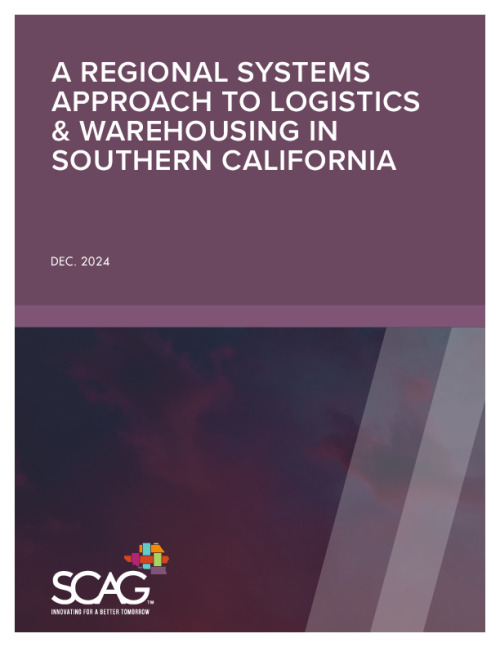



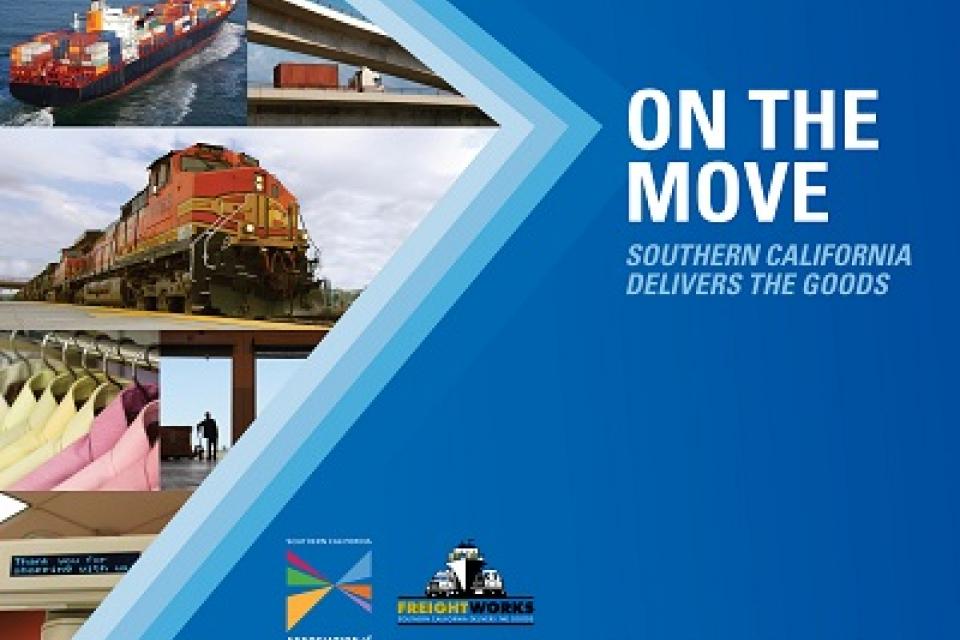 Goods movement is a cornerstone of the Southern California economy and supports the quality of life of residents in the SCAG region. In recognition of the benefits and challenges of regional freight movement, SCAG recently completed the Comprehensive Regional Goods Movement Plan and Implementation Strategy, the long-range plan for goods movement in the region.
Goods movement is a cornerstone of the Southern California economy and supports the quality of life of residents in the SCAG region. In recognition of the benefits and challenges of regional freight movement, SCAG recently completed the Comprehensive Regional Goods Movement Plan and Implementation Strategy, the long-range plan for goods movement in the region.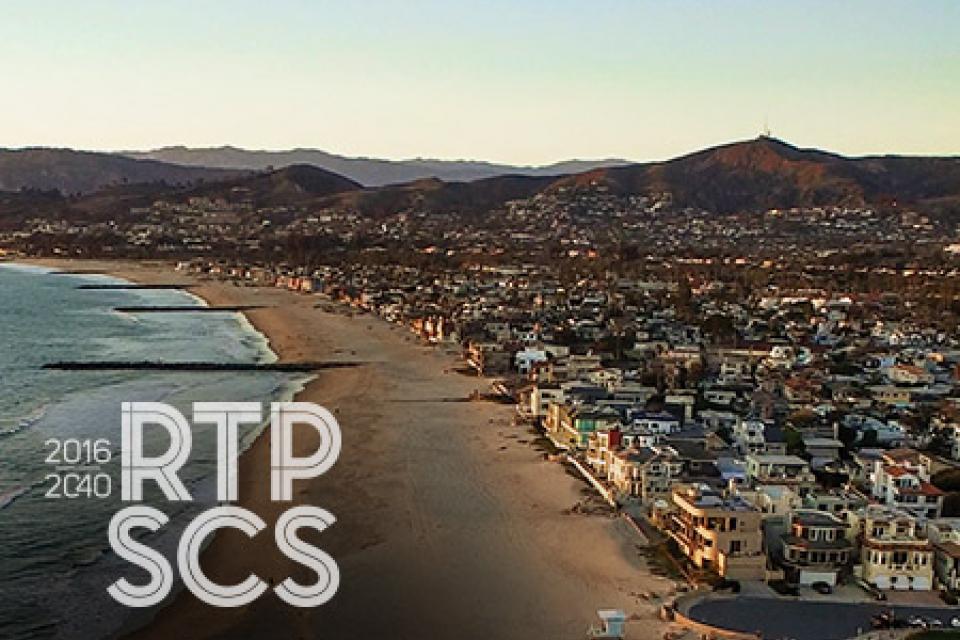 In Southern California, the movement of freight provides the goods and services needed to sustain regional and national industries and consumers on a daily basis. As part of the 2016-2040 RTP/SCS, SCAG identified over $70 billion of needed investment in its regional goods movement system. Read more about the challenges and proposed strategies here.
In Southern California, the movement of freight provides the goods and services needed to sustain regional and national industries and consumers on a daily basis. As part of the 2016-2040 RTP/SCS, SCAG identified over $70 billion of needed investment in its regional goods movement system. Read more about the challenges and proposed strategies here.